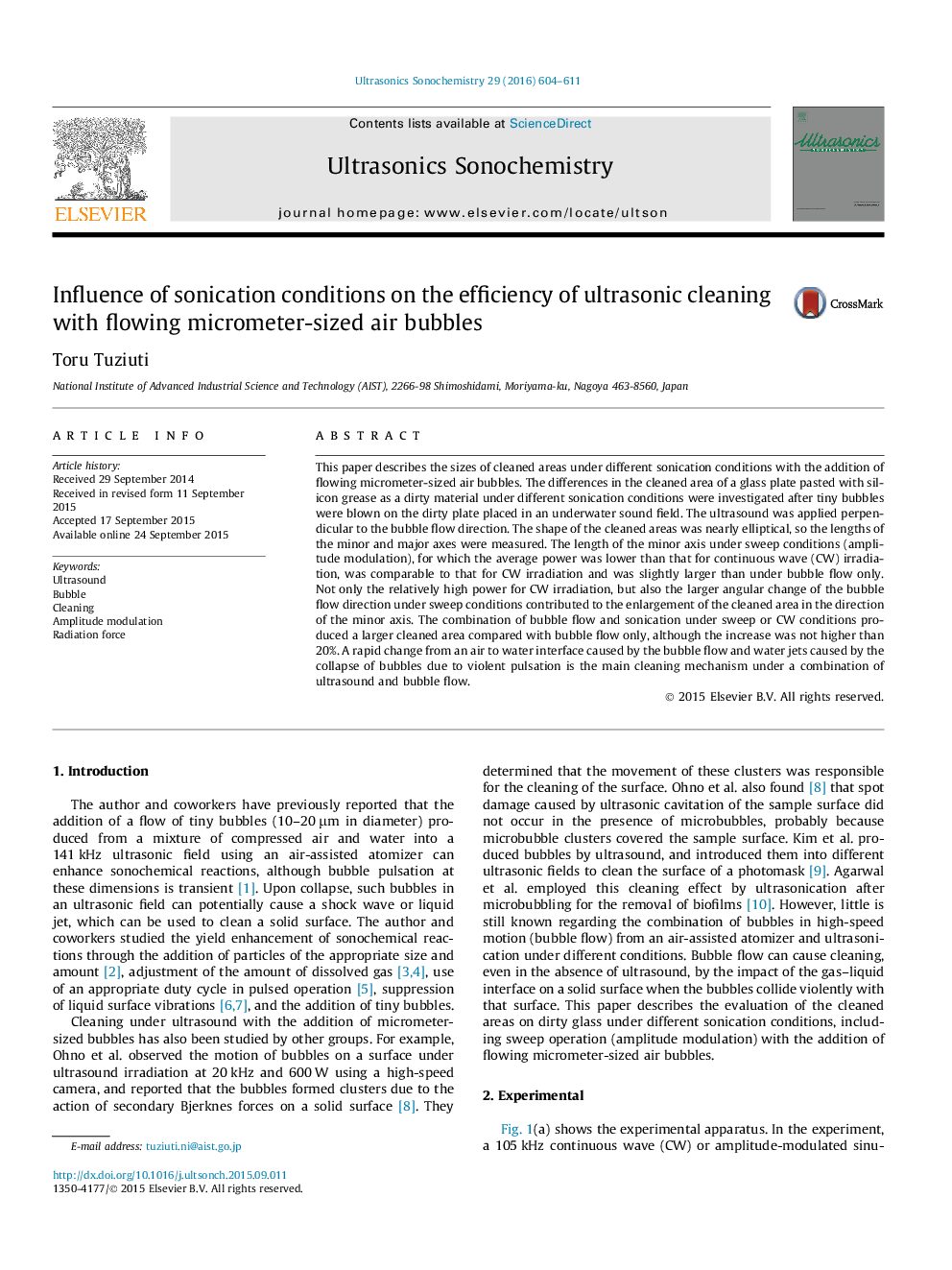| کد مقاله | کد نشریه | سال انتشار | مقاله انگلیسی | نسخه تمام متن |
|---|---|---|---|---|
| 1265841 | 1496875 | 2016 | 8 صفحه PDF | دانلود رایگان |
• Micrometer-sized air bubbles were blown on dirty glass plates placed in an underwater sound field.
• Differences in the size of the cleaned area, which was elliptical, were evaluated under different ultrasonic sweep conditions (amplitude modulation).
• The length of the minor axis of the cleaned area under appropriate sweep conditions was comparable to that under continuous wave operation.
• The change in the bubble-flow angle was controlled by the sweep conditions.
This paper describes the sizes of cleaned areas under different sonication conditions with the addition of flowing micrometer-sized air bubbles. The differences in the cleaned area of a glass plate pasted with silicon grease as a dirty material under different sonication conditions were investigated after tiny bubbles were blown on the dirty plate placed in an underwater sound field. The ultrasound was applied perpendicular to the bubble flow direction. The shape of the cleaned areas was nearly elliptical, so the lengths of the minor and major axes were measured. The length of the minor axis under sweep conditions (amplitude modulation), for which the average power was lower than that for continuous wave (CW) irradiation, was comparable to that for CW irradiation and was slightly larger than under bubble flow only. Not only the relatively high power for CW irradiation, but also the larger angular change of the bubble flow direction under sweep conditions contributed to the enlargement of the cleaned area in the direction of the minor axis. The combination of bubble flow and sonication under sweep or CW conditions produced a larger cleaned area compared with bubble flow only, although the increase was not higher than 20%. A rapid change from an air to water interface caused by the bubble flow and water jets caused by the collapse of bubbles due to violent pulsation is the main cleaning mechanism under a combination of ultrasound and bubble flow.
Journal: Ultrasonics Sonochemistry - Volume 29, March 2016, Pages 604–611
